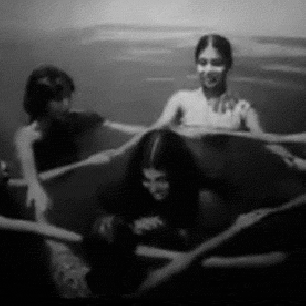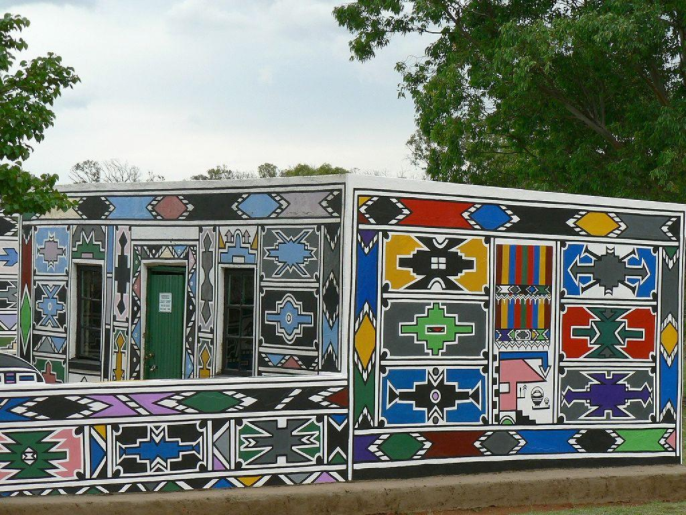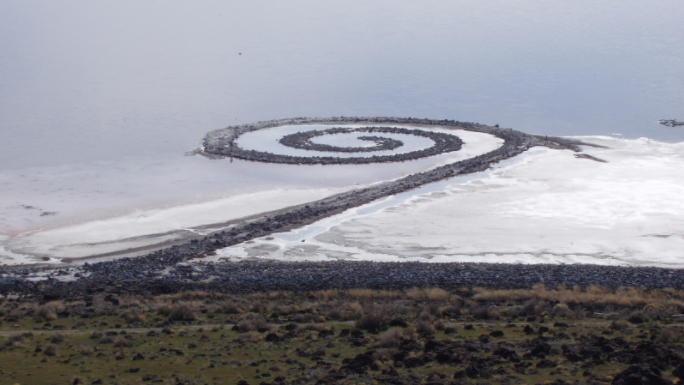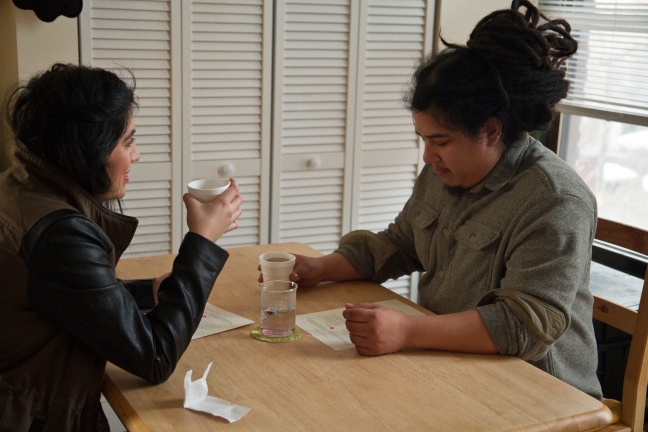2017 Curatorial Statement
Katie Waddell | Director, 2nd Floor Rear
When persons, groups, sets of ideas, etc., move from one level or style of organization or regulation of the interdependence of their parts or elements to another level, there has to be an [interval] when the past is momentarily negated, suspended, or abrogated, and the future has not yet begun. There is an instant of pure potentiality when everything trembles in the balance.
-Victor Turner, “Liminal to Liminoid in Play, Flow, and Ritual”
A ritual is a sequence of activities involving gestures, words, and objects. Rituals are symbol-laden; they accumulate, generate, or refine meaning as they saturate the people, places, and things they touch with affect and desire. They can also instigate symbolic action—rituals are performative in that they symbolically enact cultural values, but can also act upon the actors involved. Rituals ignite the intelligence of the senses, maneuvering participants through all the valences of discursive meaning, perception, sensation, affect, and action. Rituals are experience as medium, meaning as medium, even the experience of making meaning as medium. Rituals are as playful as they are purposeful. Rituals are a space set apart. A moment-out-of-time. Rituals can create cohesion and structure, or hold space for ambiguity and transformation.
Rituals also bring people together, and have the power to consolidate or interrogate group identity. Like rituals, contemporary art can always be said to establish relationships between people, ideas, identities, communities, and the broader body politic in which art takes part. But perhaps in Chicago more than elsewhere—where art-making driven by civic engagement, identity, and solidarity defines the city’s oeuvre even as its practitioners struggle for resources and recognition—artists exceed the call of market aesthetics by generating alternative arts economies and creating systems of mutual support. In 1974, anthropologist Victor Turner (quoted above) wrote extensively about how rituals facilitated communal bonding and group identity by carving out sacred space for transformation and the inversion of cultural norms. In pre-industrial societies, such rituals reinforced the social order, but, “In modern processes movements, the seeds of cultural transformation, discontent with the way things culturally are, and social criticism…have become situationally central, no longer a matter of the interface between ‘fixed structures’ but a matter of the holistically developmental…Revolutions, whether violent or non-violent, may be the totalizing liminal phases for which the [transitional states in pre-industrial rites-of-passage rituals] were merely foreshadowings or premonitions.”
In other words, rituals have real power. They are settings for setting intentions. For relating. For establishing Will and carrying it forth. 2nd Floor Rear 2017 programming shines a light on the occult, hidden nature of alternative arts practices and the communities of care that spring up around them, while asking participating artists and audiences: Can a self-care ritual be, as Audre Lorde has suggested, “an act of political warfare”? Can the act of simply being together make us stronger together? Can dialogic rituals create economies of information through which we invest in each other’s health and safety? Are protests our modern-day “rituals of affliction”**? In this dystopian climate, can radical imagination and defiant joy help us conceive and perform the future? Are there any healers in the house tonight?
**Traditionally, rituals intended to exorcise malicious spirits
Site Specific Art: Intersecting Place with Practice
Brad Fiore | Guest Contributor
In Chicago, a city in which each neighborhood has its own distinct character and the place you call home can tell much about your life, the issue of site is everything. It can determine your rent, the food you eat, the language you speak, as well as the way others perceive you. Not surprisingly it has a big effect on the kind of art you will see, whether that means building-sized murals, public statuary, priceless museum pieces, or locally made works installed in an inconspicuous apartment.
At its heart, 2nd Floor Rear is an event about connecting cultural sites across the city. Many of the artists featured choose particular places that act as vital part of the work itself. This year we can find artists working in galleries, train stations, living rooms, backyards, and other places. In each case, the site is an ingredient equally important as the paint, wood, paper, or other materials used.
In fact, for much of art’s history the issue of site has been part and parcel with the act of making. The earliest known images made by humans were etched onto the walls of caves that are thought to have been places of spiritual significance. And even as the ancient Greeks began painting and exhibiting portable wood panels, some of the most elaborate painting and mosaic work was done on the walls of homes and temples, a tradition that made a major comeback during the Italian renaissance in the form of frescos. Starting in the late 19th century the Ndebele women of South Africa used a system of colorful abstraction painted on the exteriors of their homes to secretly communicate with one another in a way that the Dutch settlers of the time could not understand. In each of these cases, art existed not just as an object of commercial exchange, but as a way to shape the environment in which we live.
Like the Ndebele women, Chicago artists are known for the way they transform their own domestic spaces into artistic sites that contain many layers of information. On February 4th, you can visit the home of Frances Dorenbaum and Claire Frost (at 1930 N. Fairfield Ave #1R) who have organized You Can Use My Toothbrush, a housewarming exhibition that features the work of five Chicago artists.
It was not until the late 1960s that site took a prominent place in the continuing discussion of American Modernism, as artists of the time sought a way to escape the walls of the gallery and the commercialization of the art object. In 1970, Robert Smithson completed his signature work, Spiral Jetty, which consists of a 1,500 foot long, 15 foot wide spiral constructed of salt crystals, mud, and basalt rock, jutting out into Utah’s Great Salt Lake. Smithson had an ongoing interest in the concept and phenomenon of entropy, a process of order becoming chaos, and sites turning to non-sites.
At 1:00PM on February 5th you can visit the 18th street Pink Line stop to witness Adrienne Deeble’s FUTILITY I, a piece that uses one key ingredient found in Smithson’s famous work, salt, to carve out a fragile personal space. Using handfuls of the crystalline material, the artist will attempt to interrupt daily commuter routines as the endless foot traffic slowly erodes her efforts.
Participant: Observations from a veteran audience member
Mia Lopez | Guest Contributor
I have never missed a 2nd Floor Rear. The festival began my second year of graduate school, and was started by my friend and classmate Katie. That first year the event footprint was small, both geographically and in terms of community. Many of the artists were students or very recent grads, and the majority of venues were people’s apartments or studios. The projects varied in size and scope and the curatorial theme was simple and straightforward—art in alternative spaces. But everything was charged with the same electric energy and excitement. Square-dancing in a warehouse studio at 3am that Sunday morning, I thought to myself, “This couldn’t happen anywhere else.”
Since its first iteration in 2012, 2nd Floor Rear has been lauded as many things—engaging, intimate, provocative, challenging, and dynamic, to name a few. It has been this very combination of qualities that has brought me back each year, even when living in Minneapolis for the third through fifth editions. A 2015 preview captured the distinct magic of the festival:
“The democracy of this festival mirrors a lot of the democracy at work in Chicago’s art scene: a mixture of Midwestern work ethic and a physicality that rebels against the constraints of the often-elitist white cube tradition. This city gets its hands dirty and the payoff is artwork that is executed with a raw sincerity rarely witnessed in this current moment in art of overwrought zombie abstraction and overzealous ‘appropriation.’”***
Although the curatorial premise has varied over the years and the event scale increased significantly, each year the festival has fulfilled the same urgent need for Chicago artists and cultural producers. 2nd Floor Rear is an outlet for creative expression that may not have an obvious home anywhere else or at any other time. Put simply, it connects artists with their audiences.
But what does it mean to be an audience member during 2nd Floor Rear? For some, being in an audience is literally about viewing. Many 2nd Floor Rear events welcome this more passive kind of witnessing or observing—traditional exhibitions, screenings, and performances that have clearly delineated roles for audience and artist. But to me, what 2nd Floor Rear excels at is creating immersive experiences for its audience and blurring the distinction between artist and viewer. It is in this gray area that the audience member becomes a participant, and often an active collaborator with the artist. Participants are as equally vital to the festival’s success as the artists, because without them, the work may exist, but it is not fully activated or engaged.
The 2nd Floor Rear experiences that have been most gratifying for me have been the ones that I have made the greatest effort to take part in. Sometimes this effort is physical (2012’s Late Night Studio Stomp and 2015’s Slo Cheese: A Dance Party come to mind) and other times it is emotional. In 2015, I confessed my greatest stressors to a total stranger as part of the Society of Smallness’ Documents Bureau (Climatic Cathartic Confessions Desk). After carefully listening to my ailments and concerns the artist prescribed me a typed permit to essentially take a deep breath. And it was strangely soothing. Later that same day, I attended Dao Nguyen and Jane Jerardi’s Six Acts of Witness, where my partner and I were guided through performing a series of small, mindful actions together. Following the artists’ prompts, we meditated and actively listened, traced messages on each others’ backs, and slowly began to perceive each other in new ways. An hour flew by. We emerged afterwards into a snowy February afternoon and felt closer than ever before.
Whether this is your first 2nd Floor Rear or your sixth, my advice to you remains the same: bring an open mind, a warm coat, and sensible shoes. Arrive early, stay late. And always—if given (or seizing) the opportunity—sit in the front row, jump on stage, and participate.
***http://chicagoist.com/2015/01/29/rebel_against_winter_with_2nd_floor.php





